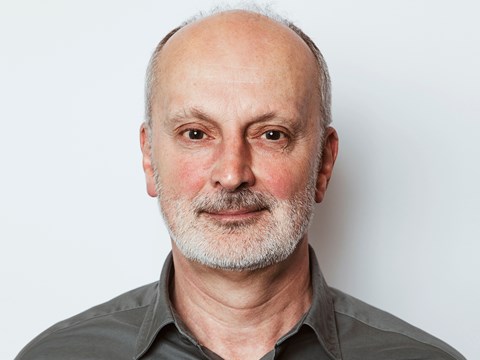Boarding the consequences train
08 Apr 2019
I’ve recently made the daring decision to change which part of my train I get on in the morning. Sad that this should be such a highlight of recent times, but as creatures of habit we are suspicious or even fearful of what the immediate consequences are going to be. For me? Still no seat, just as crowded as before, still doesn’t make the train run on time but I’m nearer the front and get through the barriers a little quicker. So slightly positive.
The mobile phone has been a wonderful invention with many positive consequences, but we are now finding that there are secondary consequences emerging. According to Ofcom, 6 billion calling minutes were used on mobile in 2017, which was a staggering decline from the 151.2 billion minutes in 2016. With 52% of all web traffic being generated through them, leading to concerns for the health and wellbeing of our children, should we really be calling them mobile phones at all now?
The fabulous documentary series ‘Blue Planet 2’ brought home to all of us the long-term consequences of our throw-away society. Across the world, people (finally) woke up to the fact that there is only one planet and there is no bin collection on a Wednesday when it gets full.
Even the newer brands such as Facebook and Google are only just finding out the unanticipated consequences of their creations.
Responses have already begun to many of these secondary and long-term consequences; from a wider understanding of mental health, to the prospect of legislation to curtail the gathering of our personal data to the importance of education in adjusting to new behaviours. Brands have started to respond, with Tesco trialling plastic free aisles in some stores, Starbuck’s using biodegradable cups and Lidl selling imperfect fruit and veg at £1.50 a box, saving 250 tonnes of food waste in six months.
Our recent research among marketers highlighted that the demand for ‘change’ sees no sign of slowing down which not only makes the task of predicting, and managing, the consequences all the more important but also the emotional sense of risk that brings.
Integrated strategy
Let’s take, for example, the growing demand for integrated strategy. The concept of integration is nothing new, but for too long the perceived answer has been to focus largely on the ability to execute more than one thing. Which is not really integration at all.
Our research highlighted marketers’ frustrations at this so-called integration because, in reality, it meant three agency people turning up each knowing one thing when they were expecting, and wanted, one person who knew three things. Clients want ‘Integrated Strategy’ as this would be simpler, more efficient and ultimately more effective, as that person would be able to advise objectively about the best combination all three things to be executed.
The consequences of failing to meet this expectation has seen clients exploring new models, or reverting back to single discipline agencies. So, why has integrated strategy been so difficult to achieve? There are a number of factors at play. First, there are some structural issues as agencies feel the client should lead while clients feel it should be the agencies. Secondly, the talent is not there because agencies have spent a generation optimising their individual, vertical channels or disciplines, so it’s no surprise that there are very few people who can view things along the horizontal axis. But, fundamentally, no one really thought through the consequences and anticipated how to meet the demand.
Yes, there are a few all-agency teams for the likes of Ford and Vodafone, but most have been set up along executional lines more than strategic decision making. 02 are one of the few, if not only, clients to set up and lead a planning hub that brings the agencies together to make the strategic decisions. They are already finding that these decisions are being made faster, and with fewer rounds of debate and amends. The agencies are paid for their thinking separate from execution, and the business is feeling the benefit.
Customer experience
Clients are also telling us that they believe delivering category-leading customer experience will be the major growth driver for their business, and so they are investing in various martech solutions to join up all the key data points, which in turn will derive greater insight to drive better engagement delivering lower acquisition costs and increased lifetime value. We are already seeing the appointment of ‘Head of Customer Experience’ in many client organisations.
Sounds great, doesn’t it? If we’ve never used this martech before, or had this level of visibility of customer behaviour before, or found insights we’ve never gained before, how do we write a customer strategy that brings all this together if we’ve never had the ability to write one before? How do we share these insights with other stakeholders, and what do they do with them if this is new to them as well?
However, one of the biggest consequences of the increased ability to communicate at a one-to-one level has been in finding ways to generate the right content fast enough to meet the demand of the algorithms. No wonder Sir Martin Sorrell bought the global content production agency Media Monks.
All this change puts an enormous pressure on both budget and talent resource, which leads to reviews on how best to deploy, redeploy or add to it in order to meet the new requirement. It’s a delicate equation and, as we enter the change cycle, there are typically parallel workstreams on insourcing, automation and consolidation, all of which we are witnessing to some degree or other.
Insourcing
If we take the much-debated insourcing topic, we are seeing plenty of consequences emerging with some clients taking immediate steps to abandon the idea and return to the outsourced model as they are just not prepared to invest in managing the after-effects or end result. Recruiting and managing the talent required is another area that will be new to several client HR teams and needs to be worked through. In many areas, some things absolutely should be insourced, automated or consolidated otherwise it’s hard to progress the change agenda but equally it shouldn’t be a surprise to find that these decisions have consequences, too.
The successful businesses are the ones who have anticipated the consequences and invested in the right areas ahead of the curve. Clients are making some big decisions at the moment and need to feel that the agencies have identified where the risks – real or perceived – exist and have a solution, either in theory or practice, to match. But most importantly we should accept that we need to work through them together, otherwise we can give up too early on change.
About The Author




